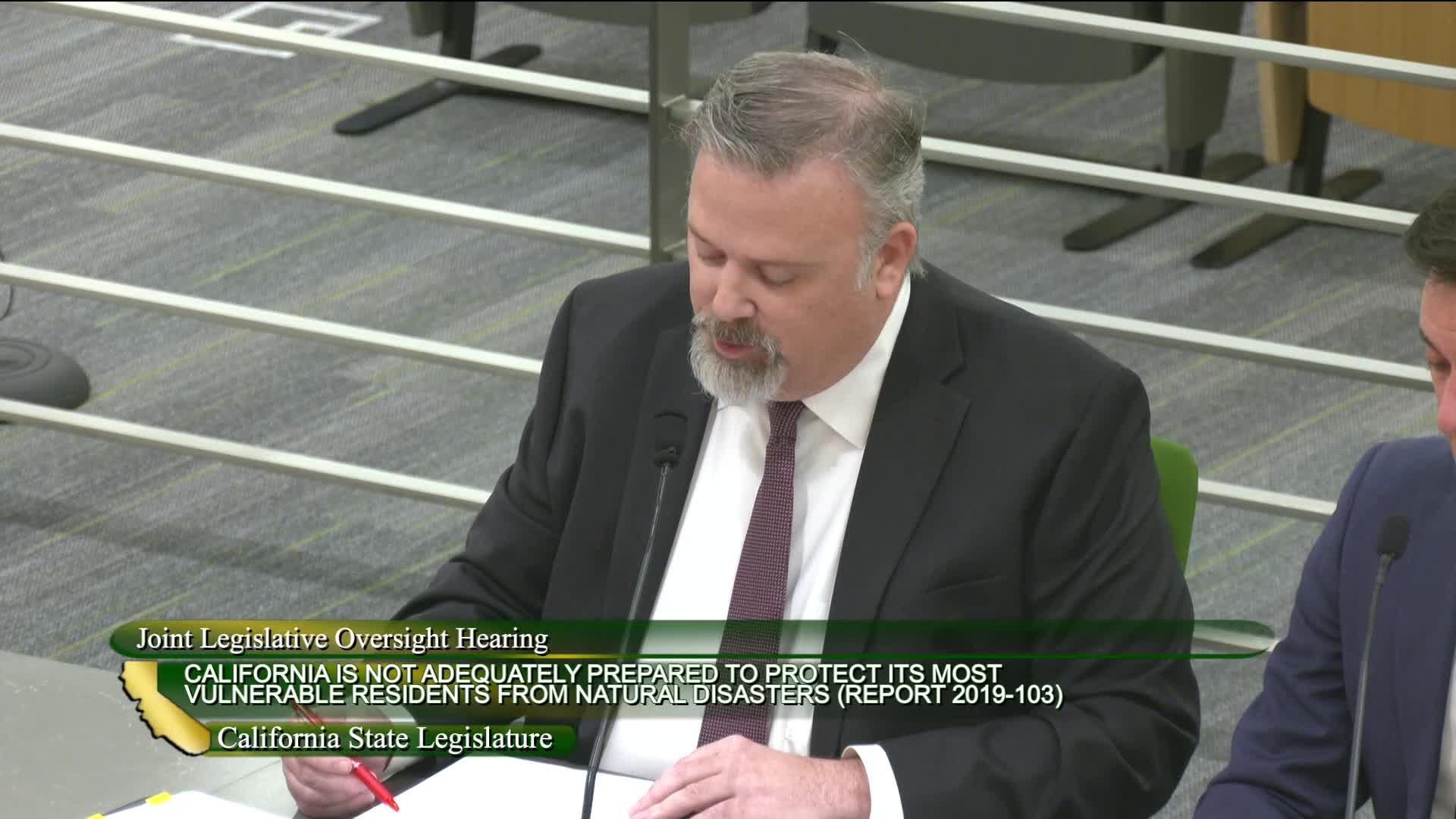Audit reveals Butte and Sonoma Counties' emergency alerts failed to meet best practices
March 05, 2025 | California State Assembly, House, Legislative, California
This article was created by AI summarizing key points discussed. AI makes mistakes, so for full details and context, please refer to the video of the full meeting. Please report any errors so we can fix them. Report an error »

In a recent joint hearing held by the California State Assembly, critical discussions emerged regarding the emergency management practices of Butte and Sonoma Counties, particularly in light of their responses to natural disasters. As the meeting unfolded, it became clear that both counties faced significant challenges in effectively communicating emergency alerts to their residents.
The backdrop of the meeting was marked by alarming revelations about outdated emergency plans. It was noted that Butte and Sonoma Counties failed to send out emergency alerts that adhered to best practices. For instance, Butte's alerts did not clearly identify themselves as coming from a credible source, such as a governmental agency, while Sonoma's messages lacked clarity about the nature of the threat, specifically a fire. This lack of transparency could have left residents confused and unprepared.
Moreover, the counties' reliance on outdated communication methods further exacerbated the situation. Instead of utilizing FEMA's wireless emergency alert system, which can reach cell phones in a designated area, Butte and Sonoma opted to send alerts primarily to landlines and to individuals who had pre-registered for notifications. Alarmingly, between 50 to 60% of these calls failed to connect, leaving many residents without crucial warnings.
Butte County's attempt to use the wireless emergency alert system was thwarted by software issues that could have been identified with prior testing. This oversight highlights a critical gap in preparedness that could have dire consequences during a natural disaster.
The audit also revealed a concerning lack of inclusivity in the counties' emergency planning. None of the counties provided alert messages in languages other than English, despite the fact that limited English-speaking residents made up approximately 10 to 14% of their populations. Butte cited a rushed response as the reason for this oversight, while Sonoma's emergency coordinator was unavailable to ensure translated messages were sent out.
Additionally, the counties did not engage with community organizations that represent residents with access and functional needs, which may have hindered their ability to assist vulnerable populations during emergencies. Many of these organizations reported that they were not consulted during the planning process, raising questions about the effectiveness of the counties' emergency management strategies.
As the hearing concluded, it became evident that both Butte and Sonoma Counties must reassess their emergency communication strategies and planning efforts. The implications of these findings are significant, as they underscore the need for a more inclusive and effective approach to emergency management that prioritizes the safety and well-being of all residents, particularly those who are most vulnerable. The road ahead will require collaboration, testing, and a commitment to ensuring that no resident is left in the dark when disaster strikes.
The backdrop of the meeting was marked by alarming revelations about outdated emergency plans. It was noted that Butte and Sonoma Counties failed to send out emergency alerts that adhered to best practices. For instance, Butte's alerts did not clearly identify themselves as coming from a credible source, such as a governmental agency, while Sonoma's messages lacked clarity about the nature of the threat, specifically a fire. This lack of transparency could have left residents confused and unprepared.
Moreover, the counties' reliance on outdated communication methods further exacerbated the situation. Instead of utilizing FEMA's wireless emergency alert system, which can reach cell phones in a designated area, Butte and Sonoma opted to send alerts primarily to landlines and to individuals who had pre-registered for notifications. Alarmingly, between 50 to 60% of these calls failed to connect, leaving many residents without crucial warnings.
Butte County's attempt to use the wireless emergency alert system was thwarted by software issues that could have been identified with prior testing. This oversight highlights a critical gap in preparedness that could have dire consequences during a natural disaster.
The audit also revealed a concerning lack of inclusivity in the counties' emergency planning. None of the counties provided alert messages in languages other than English, despite the fact that limited English-speaking residents made up approximately 10 to 14% of their populations. Butte cited a rushed response as the reason for this oversight, while Sonoma's emergency coordinator was unavailable to ensure translated messages were sent out.
Additionally, the counties did not engage with community organizations that represent residents with access and functional needs, which may have hindered their ability to assist vulnerable populations during emergencies. Many of these organizations reported that they were not consulted during the planning process, raising questions about the effectiveness of the counties' emergency management strategies.
As the hearing concluded, it became evident that both Butte and Sonoma Counties must reassess their emergency communication strategies and planning efforts. The implications of these findings are significant, as they underscore the need for a more inclusive and effective approach to emergency management that prioritizes the safety and well-being of all residents, particularly those who are most vulnerable. The road ahead will require collaboration, testing, and a commitment to ensuring that no resident is left in the dark when disaster strikes.
View full meeting
This article is based on a recent meeting—watch the full video and explore the complete transcript for deeper insights into the discussion.
View full meeting
